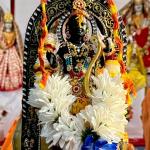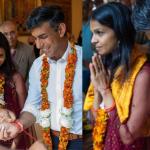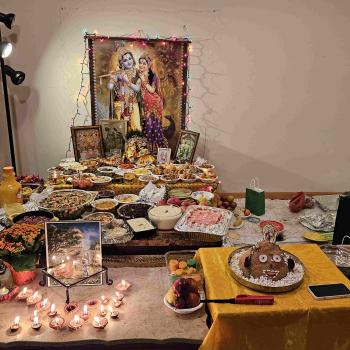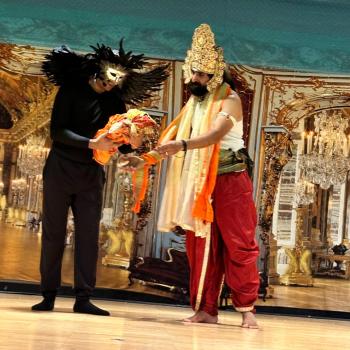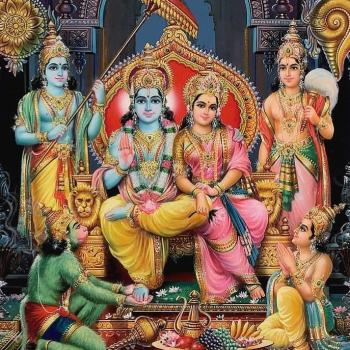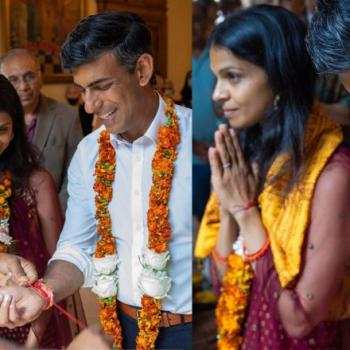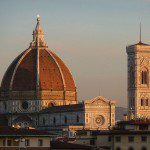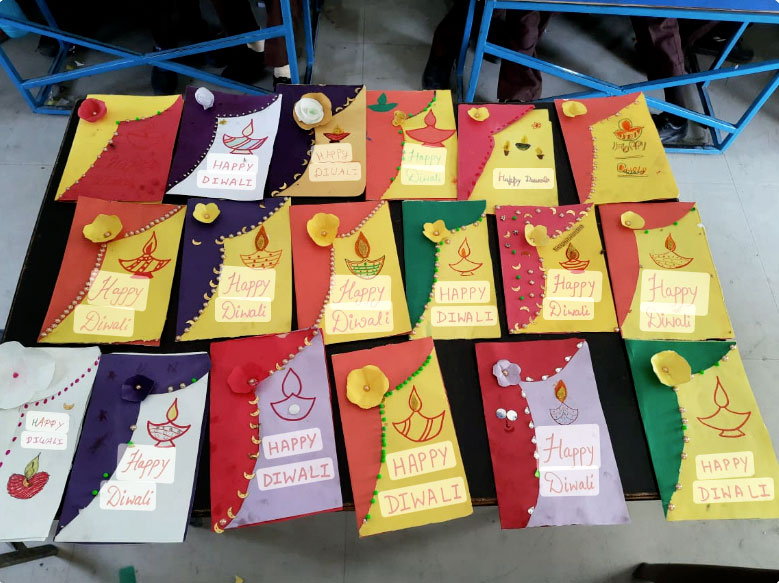
I wonder if it is merely a coincidence or a Divine calling that I am writing my first column when Hindus are immersed in celebrating their heritage. The month of October takes special significance for the Hindu religion in that many of their important festivals fall in or around this month.
Today’s focus is on Hinduism’s most coveted festival Diwali (or Deepavali), the “festival of light.” It is as significant as, for example, Christmas and Eid for the largest and second largest religions of Christianity and Islam, respectively. In the global geopolitical order, there is an upsurge in the renaissance of Hinduism in secular India, and India regaining her lost pride and political prowess.
We start with a brief historical and religious context for Diwali and discuss the associated political dimensions if any. Invariably, Hindu festivals have a background story and religious practices behind their observance which is also included as necessary.
What is Diwali? The traditional celebration of Diwali includes the lighting of the earthen ‘Diya’ (or Diwa or Deep) filled with oil or ghee with a cotton wick. These are not just the ordinary lights but their significance is deeply grounded in the centuries-old commemoration of the Hindu God Ram returning to his native Ayodhya after the glorious victory over the demon king Ravana of Sri Lanka. Lord Ram was born in Ayodhya and returned as its King on this day after 14 years of exile.
It is interesting to note how religious beliefs and convictions shape national politics and strengthen people’s sentiments. In Diwali’s context, Ayodhya, a city in the northern State of Uttar Pradesh, holds a very special significance for Hindus. I call it a miracle that the Hindus across India were united to take on a long moral and legal battle alleging, and ultimately prevailing with historical evidence, that the original Ram temple in Ayodhya was destroyed by the evil Muslim ruler Babur in 1528 A.D. Subsequently, a Babri mosque was constructed on the same site against the will of Hindus who have been wanting it back for hundreds of years.
Diwali and the Ram Temple: Finally, it was God’s grace that the five-judge bench of the Supreme Court unanimously gave a verdict on 9 November 2019 in favor of Hindus. The apex court ordered the government of India to create a trust to build the Ram temple. Clearly, this gave a tremendous boost to Hinduism in India. Thus a magnificent Ram temple is under construction in Ayodhya which is due to be completed in 2023.
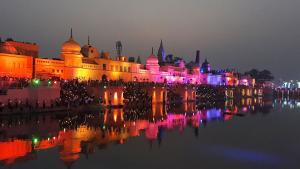
Ram Temple is just one of many places of worship for Hindus that are being built or restored. These are strong symbols of the religious and cultural renaissance after many decades of India’s freedom from the Colonial empire in 1947. The religious strife in India has its origin in the British Raj dividing India across religious lines- the Islamic Pakistan and Hindu majority India. However, when the Britishers left, independent India was left in the hands of the Brown Raj (the Browns with a British mindset).
The Brown Raj: Ironically, the Brown Raj continued the politics of neglecting the interests of the Hindu majority and minimizing the Hinduism ethos while cultivating the millions of Muslims in India as its vote bank. India’s God-fearing Hindu majority let their demise continue too long until 2014 when they elected a fair-minded government led by Modi, the current Prime Minister.
The new emerging India under Modi has been steadfast in upholding the secular constitutional ethos of respecting all religions yet steadily restoring the dignity of Hinduism and the majority of Hindus. The Islamic fundamentalists in India aided by outside forces cannot stomach that the majority of Hindus are finally waking up and seeking restoration of what rightfully belongs to them. It is no longer the appeasement of minority religious groups such as Muslims but a balanced approach to lead India toward development and trust-building for all.
In the new India, the people of Ayodhya lit over 0.9 million earthen lamps in 2021 to welcome the construction of the Ram temple. This year the target is to light 1.2 million lamps. It is as if the people of Ayodhya were celebrating the historic return of their beloved King Ram and his wife Sita. This cultural renaissance during Ayodhya’s grand celebration of Deepotsav 2021 led to the Guinness World Record for lighting the maximum number of earthen lamps. The large-scale lighting of the lamp is a reflection of proud Hindus getting awakened and the Brown Raj being a thing of the past.
Global Diwali: The fact remains that Hindus in India and other parts of the globe celebrate Diwali with great reverence upholding the traditional values and significance. For example, the Hindu community of greater Minneapolis- Saint Paul observes as many as a dozen Diwali-related cultural events each year. Diwali across the United States is celebrated in every community, big or small, with the same energy and enthusiasm. If there are Hindus settled anywhere in the world, they go to great lengths to celebrate Diwali.
The White House celebrates Diwali each year by lighting a lamp. It signifies the victory of good over evil and shining light over darkness. The strong Hindu community was also instrumental in having the United States Postal Service issue a commemorative Diwali stamp in October 2016 which continues to be available.
Diyas for Diwali: The earthen Diyas have a very strong religious and spiritual significance in Hinduism. The Divine nature and sacredness of Diyas is manifested in many Shlokas in Sanskrit. One such example is:
दीपज्योतिः परब्रह्म दीपज्योतिर्जनार्दनः ।
दीपो हरतु मे पापं दीपज्योतिर्नमोऽस्तुते ॥
Deep Jyotih Para-Brahma Deep-Jyotir-Janaardanah |
Deepo Haratu Me Paapam Deep-Jyotir-Namostute |
Its translation is Our salutations to the Light of the Lamp (Deep), representing the Supreme Brahman and Lord Vishnu (Janardhana). Let the Light of the Lamp remove our ‘Paapam”-the shortcomings, failings, and drawbacks.
The school children also get into the Diwali celebration spirit in India similar to Christmas across schools in the United States. The photo below shows the creative art activity of making greeting cards by the school children in a rural school in India which signifies the importance of Diya, the Divine light, for Diwali.
Divine Diwali and Lakshmi Puja: Among many ancient historical, spiritual, and/or religious descriptions of Diwali, one dates back to the 7th century in Nagananda, a play composed by King Harsha. According to this play, the lamps were lit at the auspicious wedding of the newly married couple: Lord Vishnu and Goddess Lakshmi. It is important to remind the readers that Lord Ram is the incarnation of Lord Vishnu, both are the Hindu Gods from different eras of the Sanatan Dharma.
In modern India and my own experience, Diwali is not just one-day of lighting the lamps but a five-day-long festive occasion for the family, communities, and the nation. The actual Diwali on October 24 this year precedes and is followed by several equally important religious observations with significant social values and traditions. Those will be a topic in a future column.
Diwali is observed on the darkest night (new moon ) of the lunar month of Kartik which in the Western calendar is from about mid-October to mid-November. Diwali occurs annually in autumn based on the lunar calendar on the darkest day known as Amavasya. It is the day of lighting the lamps, according to one’s capacity, around the house similar to the lights around Christmas in the West. Traditionally, the children with family and friends in neighborhoods light fireworks to celebrate Diwali. The families would traditionally have festive food and exchange sweets with each other.
Ironically, the Left Liberals in India have hijacked the tradition of fireworks by raising voices against it in the name of increased air pollution. One cannot deny that the air pollution index rising temporarily due to the fireworks, the rhetoric is more hypocritical and political than the environmental concerns. This is an example of how people of different religions and ideologies can influence national policies, political agendas, and cultural shifts.

On the religious side, Hindus perform ritualistic prayers to invoke Devi Lakshmi, the Goddess of wealth and prosperity. Hindus seek blessings from Goddess Lakshmi and ask her to permanently reside in their homes. The families clean and decorate their homes inside out to welcome Goddess Lakshmi and keep one of the lamps lighted all night long. Hindu’s reverence for Goddess Lakshmi, a female deity of major significance in Hinduism, clearly symbolizes women’s empowerment which has been rooted in Hinduism for ages.
The Hindu business community closes their account books on Diwali treating it as the last day of the year. The new year for them begins the day after Diwali. For many, this practice continues to date although India’s official fiscal year is April to March of the following year while the West has it from January to December.
In summary, Diwali for Hindus is like Christmas for Christians. Both are festive occasions for increased social harmony and family celebration in their own right with schools and offices closed for days. People are joyous and exchange gifts and greeting cards with family and friends while consuming an abundance of festive food. The consumer-oriented business houses heavily depend on people going on buying sprees from gifts to food items, new clothes to jewelry, replacing appliances to buying new cars, etc.
From a religious perspective, Hindus’ Diwali differs significantly from Christmas both in the ritualistic character and upholding the tradition. Hindus settled abroad do celebrate Christmas for the sake of their children not being left out but it is not clear if Christian communities settled, say, in India observe Diwali.
It is unfortunate that the Diwali celebration by Hindus in India is marred in certain communities because of the court-ordered ban on fireworks. In India’s context, there are always looming threats of religion-based communal tensions yet Hindus celebrate Divine Diwali with grace, fervor, traditions, and reverence for Goddess Lakshmi.


